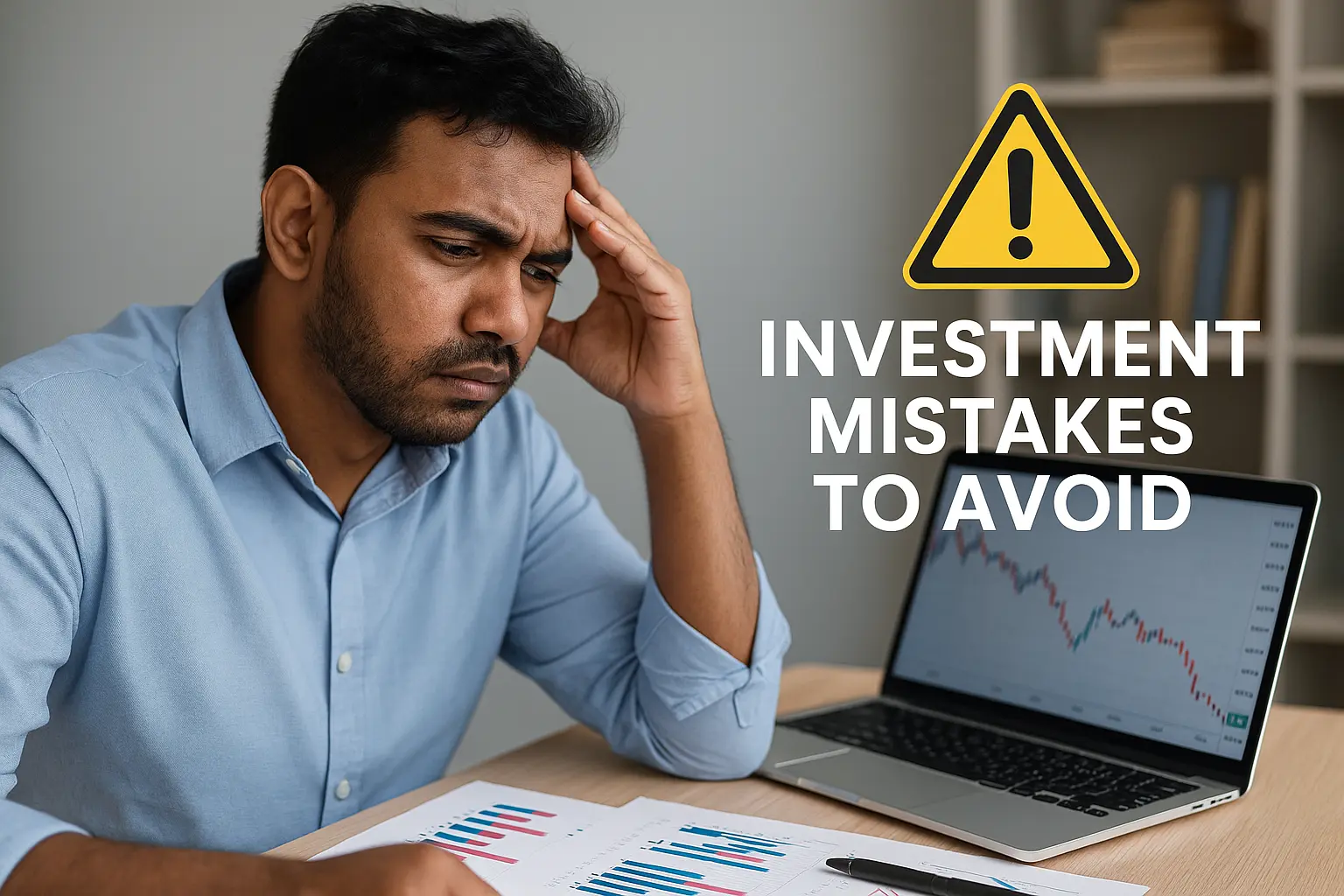Have you ever made a financial decision that you regretted later? You’re not alone.
In India, countless investors—especially beginners—fall into the same traps over and over.
In this post, we’ll uncover the top investment mistakes to avoid in India, so you can build a better, smarter portfolio.
Whether you’re just starting or already investing, avoiding these errors can make a huge difference to your returns and peace of mind.
✅ Top Investment Mistakes to Avoid in India
1. Investing Without a Clear Goal
Many people start investing just because others are doing it. That’s a recipe for poor decisions.
Instead, define your goal—is it for retirement, buying a house, or your child’s education?
✅ Tip: Categorize your goals as short-term (1–3 years), medium-term (3–5 years), and long-term (5+ years).
2. Ignoring Risk Appetite
Everyone has a different risk capacity.
Some investors panic during market dips, while others stay calm and wait.
✅ Tip: Use a simple risk profiling tool or consult a financial advisor before choosing assets like stocks, mutual funds, or gold.
3. Following Herd Mentality
Buying a stock just because it’s trending on YouTube or Reddit? That’s dangerous.
Most retail investors lose money by blindly copying others.
✅ Real Example: In 2021, many people rushed into new-age tech IPOs without understanding them. Most lost significant value.
4. Timing the Market
Trying to “buy low and sell high” sounds smart—but timing the market consistently is nearly impossible.
✅ Alternative: SIP (Systematic Investment Plan) is ideal. It helps you invest regularly without worrying about timing.
➡️ Related Reading: SIP vs Lumpsum Investment: What Should You Choose?
5. Not Diversifying Enough
Putting all your money in one stock, one sector, or even just equity is risky.
✅ Tip: Diversify across asset classes—stocks, bonds, gold, mutual funds, and even international markets.
🧮 Sample Diversified Portfolio (Moderate Risk):
| Asset Class | Allocation |
|---|---|
| Equity (Mutual Funds + Stocks) | 50% |
| Debt (FDs, Bonds) | 25% |
| Gold (Digital/ETF) | 15% |
| Others (REITs, NPS, etc.) | 10% |
6. Skipping Emergency Fund
Many investors ignore emergency savings. Then, during a crisis, they end up breaking investments at a loss.
✅ Tip: Always build a 6-month emergency fund in liquid assets like savings account or liquid mutual funds.
7. Falling for “Guaranteed Returns” Scams
If it sounds too good to be true, it probably is.
Fake investment apps and Ponzi schemes are rising in India.
✅ Tip: Only invest in SEBI-registered platforms and always double-check credentials.
➡️ Related Reading: Top 5 Apps for Beginner Investors in India
✅ FAQs (Schema-Optimized)
Q1: What is the biggest investment mistake made by beginners in India?
A: The biggest mistake is investing without a financial goal or plan. It often leads to poor choices and losses.
Q2: How do I avoid scams while investing in India?
A: Stick to regulated entities (SEBI, RBI, IRDAI) and avoid offers that promise high returns with zero risk.
Q3: Is diversification really important for Indian investors?
A: Absolutely. Diversification reduces the impact of a single asset’s poor performance on your entire portfolio.
Q4: Can SIPs help avoid market timing mistakes?
A: Yes. SIPs promote disciplined investing and average out costs over time, making them ideal for avoiding timing errors.
Q5: Should I start investing before building an emergency fund?
A: No. Secure your finances with a 3–6 month emergency fund before investing in volatile assets.
Q6: What’s a good tool to assess risk tolerance in India?
A: You can try tools from mutual fund AMCs like HDFC, ICICI, or online advisors like Zerodha or Groww.
✅ Conclusion
Investing isn’t just about choosing the right stock or fund—it’s about building strong habits and avoiding common traps.
By steering clear of these top investment mistakes to avoid in India, you’re already ahead of most beginner investors.
✅ Next Step:
- Subscribe to our newsletter for weekly insights
- Share this post with someone who’s just started investing
- Check out: How to Start Investing with Just ₹500 in India

